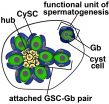Neuropsychiatric disorders among young people ages 10 to 24 are a leading cause of disease burden globally. Unlike many chronic physical health problems, most psychiatric disorders are first diagnosed in childhood, which allows the disorder to affect a person's entire lifespan. The vast majority of this disease burden is due to more common emotional and behavioral disorders.
William E. Copeland, Ph.D., of Duke University Medical Center, Durham, N.C., and coauthors report on how these common childhood psychiatric disorders can affect adverse functional outcomes during the transition to adulthood.
The authors conducted a study of 1,420 individuals from 11 predominantly rural counties in North Carolina who were assessed six times during childhood (9 to16 years of age) for common psychiatric diagnoses and subthreshold psychiatric problems, which are those that do not meet the full criteria for diagnoses. A total of 1,273 participants were assessed three times during young adulthood (between 19 and 26 years of age) for adverse outcomes related to health, the legal system, personal finances and social functioning.
Of the 1,420 participants, 26.2 percent met the criteria for a common behavioral or emotional disorder at some point in childhood or adolescence, 31 percent displayed subthreshold psychiatric problems and 42.7 percent never met the criteria for a disorder or subthreshold problem.
Among the participants who never had a psychiatric disorder or subthreshold symptom impairment in childhood, 19.9 percent reported an adverse outcome as an adult, suggesting this was not a rare experience. In comparison, 41.5 percent of participants who had childhood subthreshold problems and 59.5 percent of participants who had a childhood psychiatric disorder reported adverse outcomes as adults.
Participants with a childhood disorder had six times higher odds of at least one adverse adult outcome compared with those participants with no history of psychiatric problems and nine times higher odds of two more outcomes, according to the results.
The study notes that this risk was not limited to those participants who had psychiatric diagnoses in childhood. Those participants with subthreshold problems had three times higher odds of adverse adult outcomes and five times higher odds of two or more adverse outcomes.
Participants with childhood psychiatric disorders and those with subthreshold problems in childhood made up close to 80 percent of participants with adverse adult outcomes and close to 90 percent of participants with two or more adverse adult outcomes, the results also indicate.
The authors note the study cannot make conclusions about causal effects and the study population is not representative of the U.S. population.
"Common childhood psychiatric disorders are costly, impairing and often a source of great distress for the child and a burden to others. Many children will experience impairing psychiatric problems over the course of their childhood. These common early disorders are often associated with a disrupted transition to adulthood, even if the psychiatric problems do not persist into adulthood and even if the problems do not meet full criteria for a psychiatric disorder. And with each additional exposure to childhood psychiatric problems, the prognosis becomes more dire. If the goal of public health efforts is to increase opportunity and optimal outcomes, and to reduce distress, then there may be no better target than the reduction of childhood psychiatric distress - at the clinical and subthreshold levels," the study concludes.
(JAMA Psychiatry. Published online July 15, 2015. doi:10.1001/jamapsychiatry.2015.0730. Available pre-embargo to the media at http://media.jamanetwork.com.)
Editor's Note: This work was supported by the National Institute of Mental Health, the National Institute on Drug Abuse, the Brain and Behavior Research Foundation and the William T. Grant Foundation. Please see the article for additional information, including other authors, author contributions and affiliations, financial disclosures, funding and support, etc.
Editorial: Children Who Exhibit Psychopathology at High Risk in Adulthood?
In a related editorial, Benjamin B. Lahey, Ph.D., of the University of Chicago, writes: "These findings could mean one or more things about causal links between psychopathology in childhood and psychopathology in adulthood: (1) child psychopathology and adult psychopathology could have different causes, but experiencing mental health problems in childhood may directly or indirectly increase the risk for adult psychopathology. ... (2) It is possible that some or all of the causes of psychopathology across the life span operate in early life. ... (3) The predictive association between child psychopathology and adult psychopathology could reflect chronic or intermittent exposures to conditions that give rise to psychopathology when encountered across a life span."
"Unfortunately, there currently is little empirical basis for choosing among them. Thus, the extant studies of the predictive association between child and adult psychopathology raise as many questions as they answer. Fortunately, the unanswered questions are clear, extremely important and answerable if the right kinds of prospective studies are conducted."
(JAMA Psychiatry. Published online July 15, 2015. doi:10.1001/jamapsychiatry.2015.0798. Available pre-embargo to the media at http://media.jamanetwork.com.)
Editor's Note: Please see the article for additional information, including other authors, author contributions and affiliations, financial disclosures, funding and support, etc.
INFORMATION:
Media Advisory: To contact corresponding author William E. Copeland, Ph.D., call Samiha Khanna at 919-419-5069 or email samiha.khanna@duke.edu. To contact editorial author Benjamin B. Lahey, Ph.D., call Kevin Jiang at 773-795-5227 or e-mail Kevin.Jiang@uchospitals.edu.
To place an electronic embedded link to this study in your story Links will be live at the embargo time: http://archpsyc.jamanetwork.com/article.aspx?doi=10.1001/jamapsychiatry.2015.0730 and http://archpsyc.jamanetwork.com/article.aspx?doi=10.1001/jamapsychiatry.2015.0798

